This page last updated on Friday, October 13, 2006 at 9:45:57 AM
| Home | | ATV | | ATV Centre | | Schools | | Fenton Relay | | Antenna Theory | | Other Pages |
An interview with Andy Martin
Andy Martin worked behind the scenes in ITV for 32 years, starting as an Engineer with ATV London in the mid 60s and then in Presentation. Andy became a Programme Producer/Director with ATV (later Central) in Birmingham and Nottingham in 1979 and finally freelanced for many ITV companies. He now lives in South Western France and has his own communication business. Andy kindly supplied us much of the information on the workings of ATV...
Between 1964 and 1966, Andy worked at ATV London as a Technical Assistant (Engineer) at Foley/Ogle Street, London W1: "When I first started as a trainee engineer, we transmitted such well-known series on film, including Danger Man and The Saint. Telecine (Telecine machines convert film, an optical medium, into an electronic format for broadcasting) was in Foley Street and VTR was next door in Ogle Street.
"Foley Street and Ogle Street are midway between the BBC in Upper Regent Street and the Post Office Tower. It had been a pub during the war and had been bombed and there were rumours that there was a ghost that had been heard many times during the small hours! VTR transmitted recorded material such as Emergency Ward 10, The Braden Beat and The Plane Makers. These programmes were recorded from the ATV Elstree Studios at Borehamwood, now of course home to the BBC and especially well-known for Eastenders.
"Incidentally, the area used today for Eastenders was used by ATV for a very similar series called Honey Lane in about 1965. It was recorded on a mobile VTR with one camera attached called 'Monoculus'. ATV London provided the weekend transmission in London starting on Saturdays around midday with two short children’s programmes followed by World of Sport, presented by Dickie Davies, which was provided by ABC Television from its Teddington studios. (Many years later whilst directing Blockbusters for Central TV, I worked with Dickie’s wife Liz Davies who was the senior researcher on this very successful teenagers' programme). The weekend finished just before midnight."
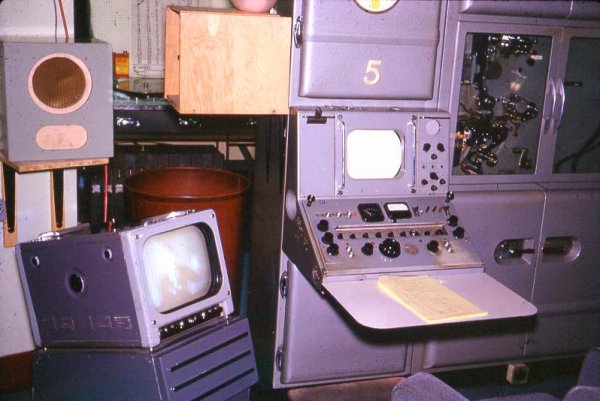
An EMI telecine machine in ATV London 1965
"There were a total of six Telecine machines in Foley Street during the 60s. Two Pyes, two EMI flying spot machines and one Rank Cintel flying spot machine, which was superior to the EMIs in quality but a difficult machine to set up technically. The EMI machines were built like battleships. These were used almost exclusively for transmission of 35mm film such as The Saint and Danger Man.
"I remember some of the prints were in colour, which, of course, we could not view in colour, but were quite a novelty to look at physically. The Rank Cintel was only ever used for 16mm transmission such as Bonanza. Pye 3 was used solely for commercials. This machine was looked after almost exclusively by one engineer called Eric Ainly who was quite a character, and used to do male modelling during the week! There was a very heavy emphasis on maintenance as all of these devices had hundreds of valves."
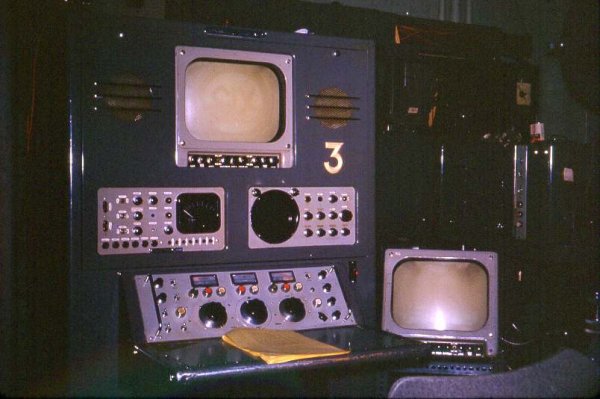
A Pye of Cambridge machine in ATV London 1965 used for the transmission
of commercials
In 1967 Andy moved on to become an Assistant Transmission Controller with ATV London at the Foley Street Master Control Room (MCR). MCR controlled sound and vision before it was sent, via Post Office telecommunications links, to the IBA transmitter at Croydon.
Transmission Controllers (TCs) and Assistants (ATCs) were responsible for the final output to the viewer. The Transmission Controller had total responsibility of the companies output. The primary concern of the Transmission Controller was that commercials were correctly transmitted, as this was the sole income in those days. The rolling of the Telecine and VTR machines was done verbally through a talkback system. This could become extremely complicated as VTR machines required a 15 second pre-roll and Telecine machines 5 seconds. With all these different sources including counting down live studios, Announcers etc, the TC had to be a multitasking person. He was also responsible for what the announcer would promote (this later became the responsibility of the Promotions Department) and to agree underruns and overruns with live productions. His responsibilities were all encompassing.
At ATV London the Transmission Controller was also in control of the whole of the ITV Network; ATV was called 'The Nominated Contractor.' (Associated Rediffusion had this title during the week). The Nominated Contractor TC informed other companies of any irregularities that might deviate from the second by second agreed daily schedule, called the 'routine sheet' [more on routine sheets below]. Although programmes were timed to the second, often through human error, programmes both recorded and live underan or overran with very complicated repercussions for the TC. The communication to the ITV Network was through the facility of what was called the “Red Phone.” This was an open line Post Office (now BT) high grade phone system, which could only be rung by the TC in London or by ITN in Kingsway. All the TCs in all the ITV companies could then communicate together. This system had been originally set up to coordinate any serious situation that might arise, such as the death of a Royal or other important person. At the time there was a strict code of practice for any possible situation of a Royal death etc., from interruption of a programme immediately or at the end of a programme. However, by the early 1960s the Red Phone had red scheduled calls, one at 11:00 and another at 17:00.
The presentation staff of TCs and ATCs previewed every single item that was transmitted, with the exception of in-house ITV programmes. A routine sheet was made for the day normally as late as possible the day prior to transmission. The coordination for this was quite impressive. At ATV London this was done at ATV House, which was in Great Cumberland Place, just off Marble Arch. Feature films were cut to specific lengths by a Film Editor and then previewed by an ATC in Foley Street. 35mm commercials were also compiled by a Film Editor and each commercial was heavily scrutinised. At the time the ITA (Independent Television Authority) had a very strict code of practice regarding commercials in relation to juxtapositioning of programme content etc. as no implication of sponsorship was allowed in any way whatsoever. Even different products but with a similar content were moved well away from each other within the break. If commercials were lost on transmission due to a technical failure, which was quite often the case, it was imperative for the TC to reinsert them into transmission as soon as possible. This might sound easy but as everything was scheduled to the second along with the Network, who might be transmitting a different programme and then rejoining altogether at a specific time, this was not at all an easy thing to achieve.
Andy remembers the MCR at Foley Street: "It was very small, about 15ft x 15ft. Unbelievably small! It was on two levels with the Master Control Engineer, who was in charge of the technical quality, on the top row at the rear left looking at the monitor rack. On his right sat the Transmission Controller.
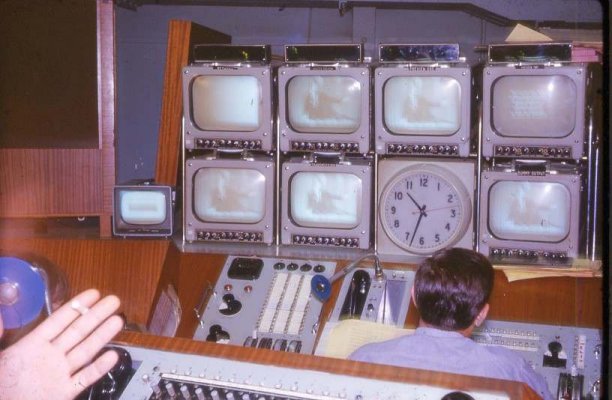
The ATV London Master Control Room in 1966 (Foley Street W1)
On the front row of the MCR were the two Assistant Transmission Controllers, on the left was the sound desk and on the right the vision desk. Sound levels were considered a very important aspect and maintained at a constant level by the sound ATC - unlike today! In September 1966, when the photograph above was taken, the Transmission Controller was Leslie Lugg (it is his hand in shot). Leslie later became the Head of Presentation at ATV, and later Central TV Birmingham. The vision ATC in shot is John Ives.
Later in 1967 it was decided to have two TCs and Mike Lloyd, who had been an ATC was promoted, he went on to become a Programme Director and directed many well known programmes such as The Golden Shot. The other ATCs at the time were: Maggie Dunn, John Ives, Pete Lawes, Andy Martin, Malcom Neal and Jean Prince. After Mike Lloyd became a Programme Director, Pete Lawes was promoted to the second TC.
The in-vision announcer was in a small studio on the floor above. I remember this being full of equipment and very messy by later standards. The announcers, during the late 50s, through the 60s were Arthur Adair, John Braban, Peter Cockburn, Robert Gladwell, Dick Graham, Jim Lloyd, Trevor Lucas, Shaw Taylor and Norman Tozer. A cameraman from the Elstree Studios was rostered to look after the continuity camera for the weekend. There was a small promotion studio where Police Five was put together by an ATC and a sound engineer, who was specifically rostered from Elstree.
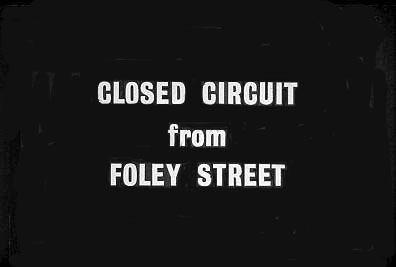
A slide used to distinguish the distribution of material from Foley
Street to other companies,
for example programmes to be broadcast at different times than the network.
Ogle Street next door had four Ampex 1000 2” VTR machines with a very small associated control room at the rear. These machines had been introduced in 1956 and had rotating heads, transverse scanning, and FM encoding, which allowed broadcast quality recording at 15 inches/second on 90 minutes reels. Each tape had to be checked for ‘drop outs’ before use (i.e. missing oxide coating on part of the tape, showing up as lines of white across the picture) tapes were then classified for recording or if there were too many dropouts then they were returned to the manufacturer.
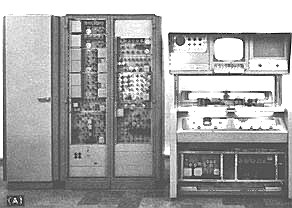
An Ampex 1000 VTR machine similar to those in ATV London (Ogle Street)
1960 – 1968
In 1967, Andy moved to Yorkshire TV, to be a Senior Assistant Transmission Controller, where he helped put YTV on the air.
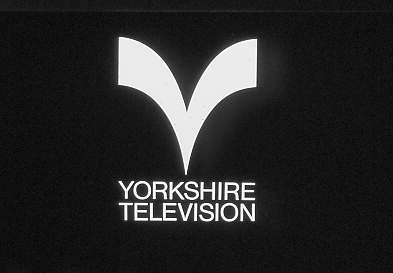
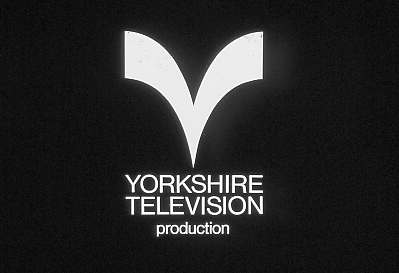
Two slides from Yorkshire's early years
To be continued....
